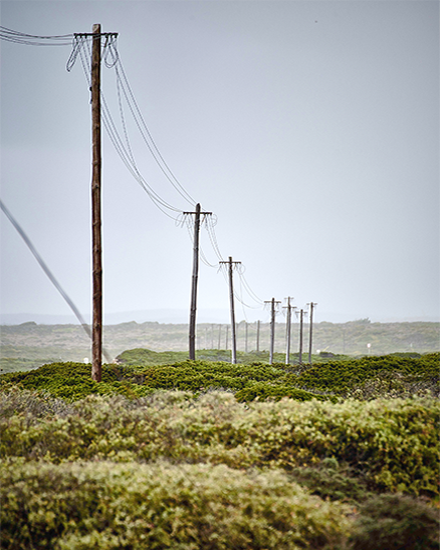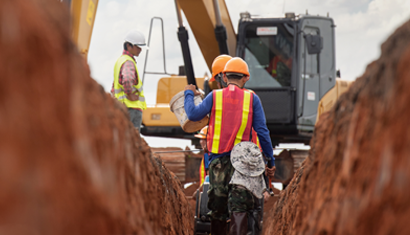We use these cookies to gather information about the way users interact with our website..We use this information to create reports and help us improve the website.
Read our Privacy Policy or Cookie Policy
AcceptTechnology & Installation
- Technology & Installation
- Aerial
Aerial
Microduct may be installed above ground along aerial pole lines when underground installation is difficult due to rocky soil or where freezing makes the ground impossible to dig during lengthy periods of time. Knet aerial microducts are self supporting with either a dielectric fiberglass strength member or steel strength member preinstalled.

With the built in strength member, the microduct can be attached to each pole without any lashing required, which eliminates a major installation step compared to traditional cable installations. To attach the microduct to the pole, a wedge style clamp is affixed to the strength member. When the microduct is pulled tight, the wedge clamps tighter, putting a strong grip onto the member.
Typically a method called the 5th pole concept is used in order to maximize microduct space while retaining a minimal number of overall ducts, as remaining lightweight is crucial for an aerial installation. In this scenario a distribution hub is installed at every 5th pole. The distribution hub will handle connections to all endpoints nearest to it’s pole as well as the two poles to either side.




Distribution cabling will be installed in a continuous path through each hub, dropping off necessary fibers at each location. From there, individual ducts are utilized for drop fibers traveling in either direction from the hub
At each pole with nearby connection points, it will be necessary to branch out one or several individual ducts from the main bundle. To protect the exposed duct connections from the weather use a duct joint closure. The closures are a lightweight yet rugged PVC material that wrap completely around the branch point and claps together. The closure is filled with a water blocking gel to keep water from the ducts.
Accessing the distribution cable at the hub location involves the following sequence.
A close up of the temporary loop from step A above can be seen here. As you can see, the microduct bundle is cut at both entrance and exit of the distribution hub exposing the inner ducts within the enclosure. To create a continuous path for cable a temporary section of duct is connected to the duct that will be used for distribution cable within the bundle using two duct connectors. Once the cable is installed, the temporary section of duct can be disconnected, and must be cut longitudinally to be removed. The duct connectors will have to stay in place, so make sure you have plenty on hand.






KNET Microduct Assemblies has been rigorously tested by Telcordia Technologies and found to be compliant to Telcordia GR-3155-CORE.




